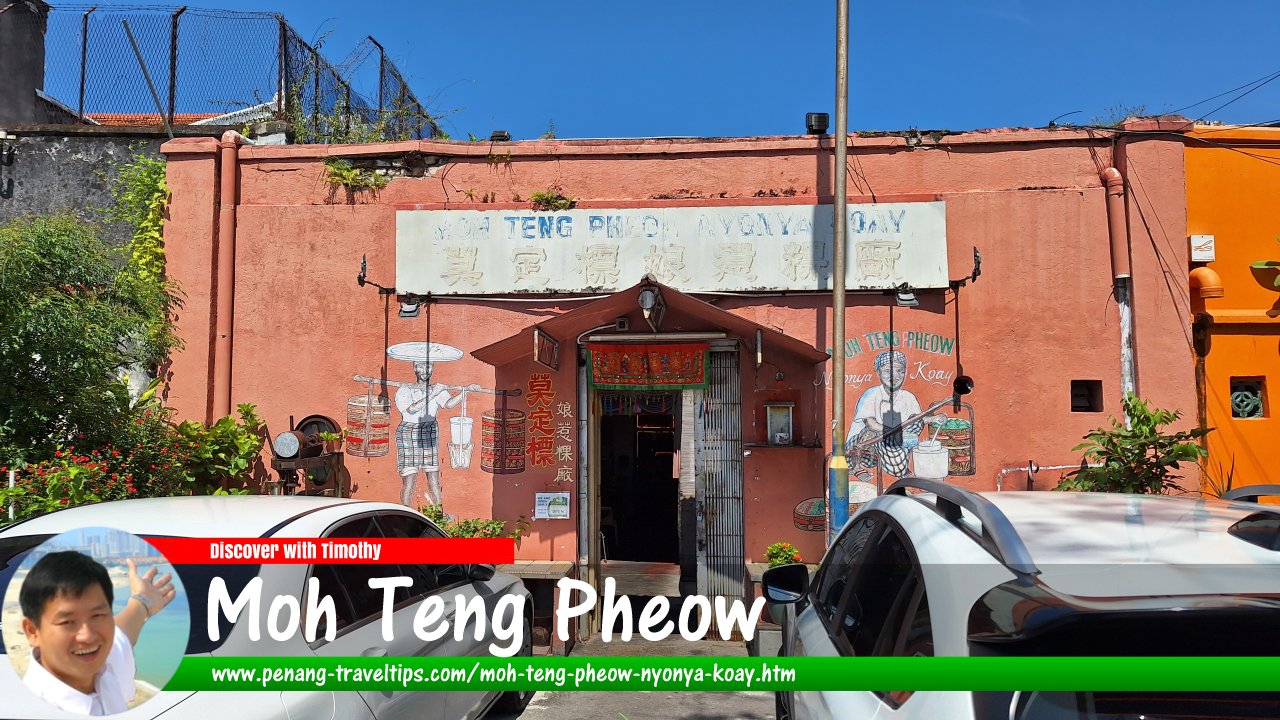 Moh Teng Pheow Nyonya Koay (2 January 2025)
Moh Teng Pheow Nyonya Koay (2 January 2025)
Moh Teng Pheow Nyonya Koay (GPS: 5.41952, 100.33549) is a popular kuih shop in George Town, Penang. It is entered from the rear facing Jalan Masjid, which is off Lebuh Chulia. Moh Teng Pheow operates a cafe where the locals get to enjoy various types of Nyonya kuih. Business hours is from 10:30 am to 5:00 pm daily. Visitors walk through the kitchen area where they get first-hand view of how the various kuihs are made.
My wife and I enjoy Nyonya kuih, and in fact, my wife often make Nyonya kuih at home, for our personal consumption. So when we heard about this shop, Moh Teng Pheow Nyonya Koay, we were keen to pay it a visit. It so happens that the business was started by the father of a Facebook friend, Lily Moh, and she introduced us to meet her brother Mook Hian Beng, who is running the business with the help of his son Roger and daughter Jolyn.
Return visit
I first visited Moh Teng Teow on 3 April 2016 when I was received by Mr Mook Hian Beng, himself the second generation to operate the shop which was founded by his father. When I make this return visit on 2 January 2025, I was met by Mr Mook's son, Cavin. By now, the shop has garnered a Michelin star for 2024, and this is proudly displayed on the display case.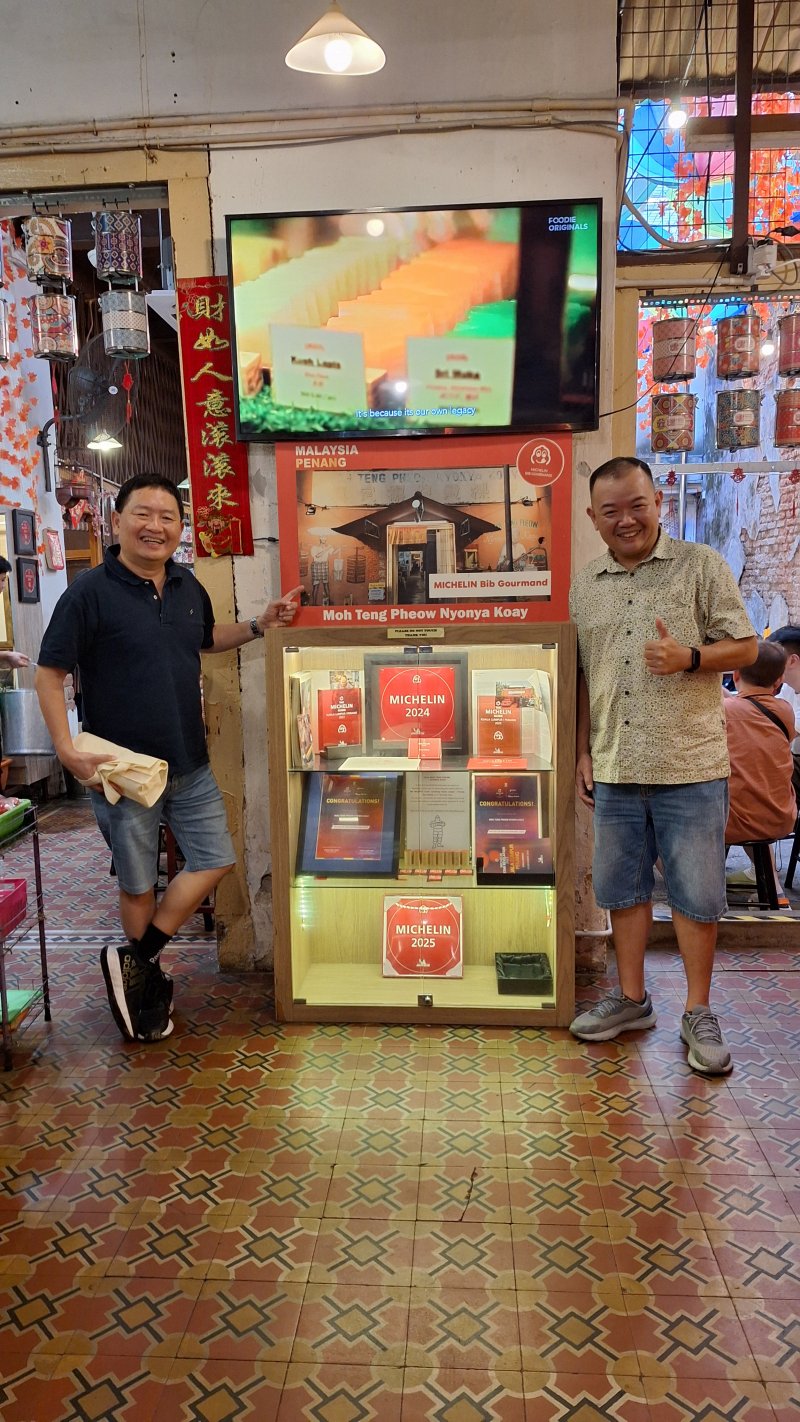 Here I am with Cavin Mook at the display case with the Michelin recognition. (2 January 2025)
Here I am with Cavin Mook at the display case with the Michelin recognition. (2 January 2025)
Moh Teng Pheow Nyonya Koay is  on the Map of Jalan Masjid, George Town, Penang
on the Map of Jalan Masjid, George Town, Penang
History of Moh Teng Pheow
Moh Teng Pheow Nyonya Koay was founded in the 1930s by its namesake, Moh Teng Pheow, who was born in Hainan, and arrived in Penang at the age of 14. He had learned the trade from a local Nyonya who was making kuih for sale in George Town, and initially, he worked under her, until such time that she decided to retire from the business, and he took over.In the early years, Moh Teng Pheow did not sell the kuih retail. Rather, he depended on Indian kuih vendor who sold the kuih on his behalf through commission. In those days, these Indian vendors would go around different parts of George Town selling kuih. But over time, the number of Indian kuih sellers declined, as they retire from selling, and many have passed away,
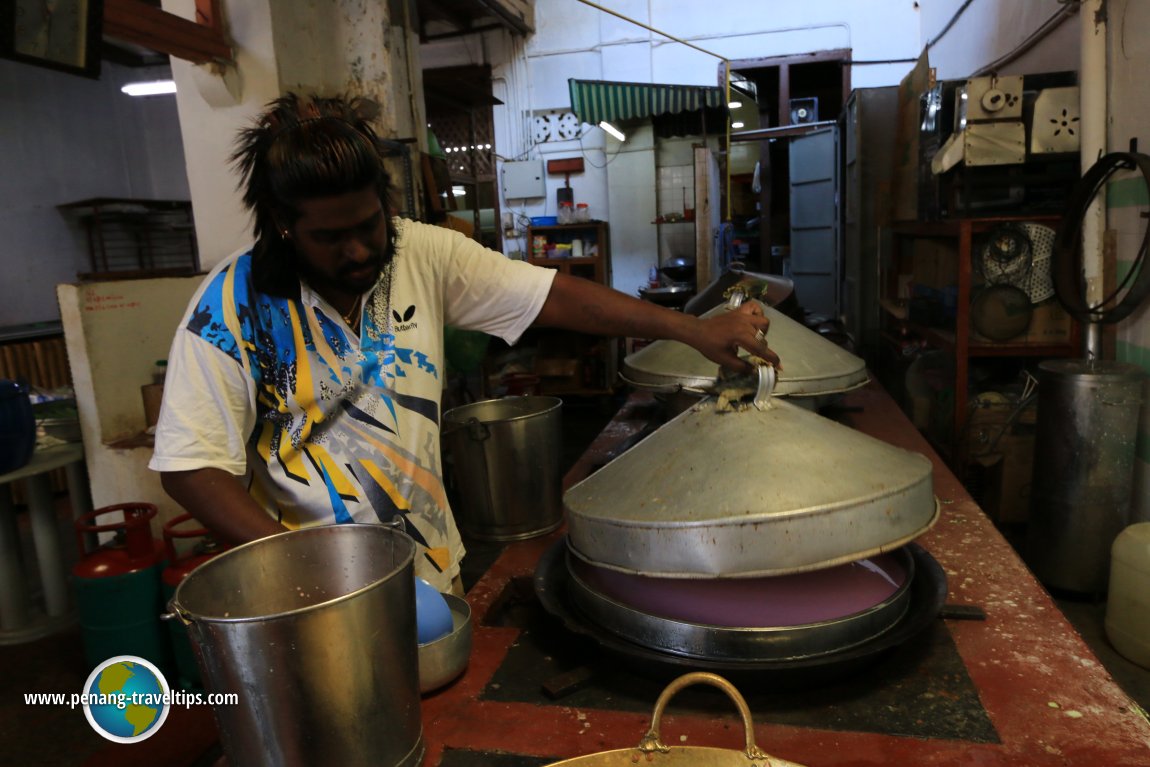 Worker shutting the lid on the kuih lapis (Nyonya steamed layer cake) after adding another layer to it (3 April 2016)
Worker shutting the lid on the kuih lapis (Nyonya steamed layer cake) after adding another layer to it (3 April 2016)
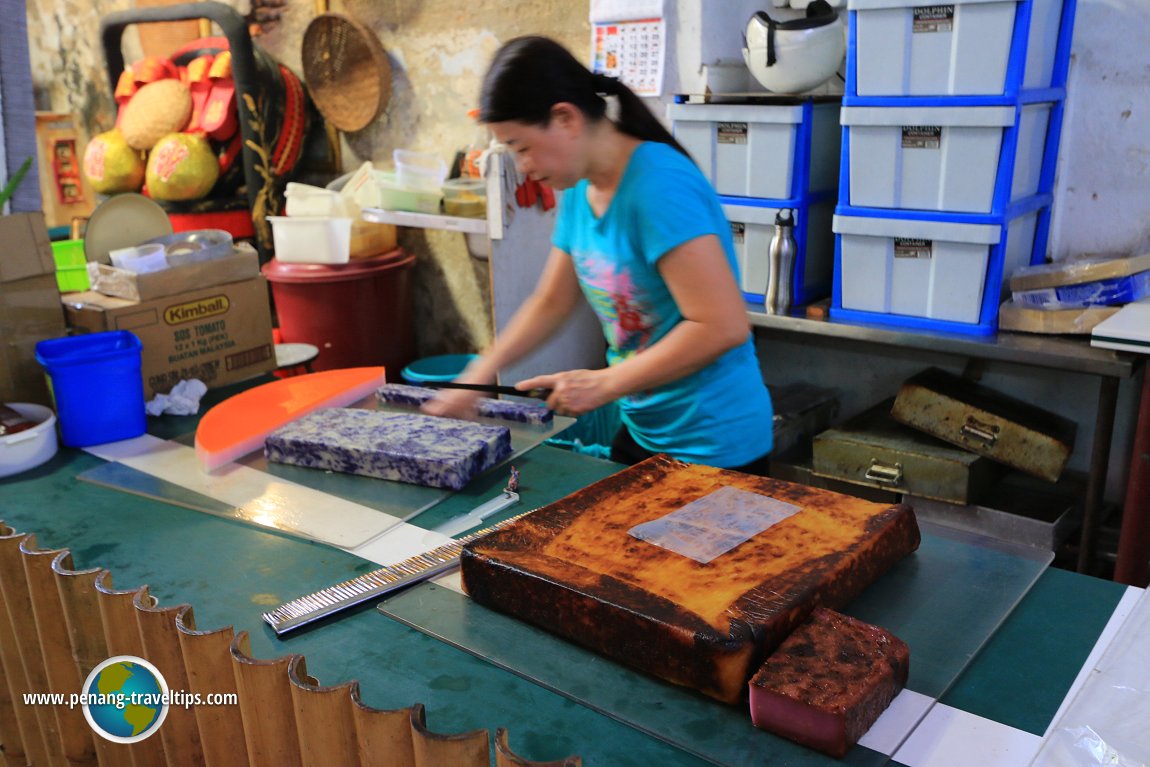 Slabs of kuih lapis, pulut tatai, chu cu kuih and kuih bengka being sliced (3 April 2016)
Slabs of kuih lapis, pulut tatai, chu cu kuih and kuih bengka being sliced (3 April 2016)
The business initially passed to Lily's eldest brother, and after he passed away, the business was taken over by Lily's second eldest brother, Mook Hian Beng (who is also well known for Mook's Pizza) I had the opportunity to meet the jovial Mr Mook, and I couldn't help asking him why his surname is Mook but his father's is Moh. Apparently when he was born, the midwife mispronunced his surname, leading to it being misspelled on his birth cert. And as a result, he carries along the unique Mook surname while the rest of his siblings are Moh.
On my visit to Moh Teng Pheow Nyonya Koay, I saw that business was brisk. There is a counter where visitors can order various types of kuih. Among the kuih that are on sale that day include the abok-abok, pulut inti, pulut tatai, kuih bengka, chu cu kuih (kuih bengka ubi kayu), kuih lapis, chai tau kuih, popiah chee, karipop, rempah udang, kuih koci and sri muka, to name some. They also sell kaya. According to Mr Mook, they used to make even more variety of kuih, but due to being shorthanded, they are compelled to downsize their list.
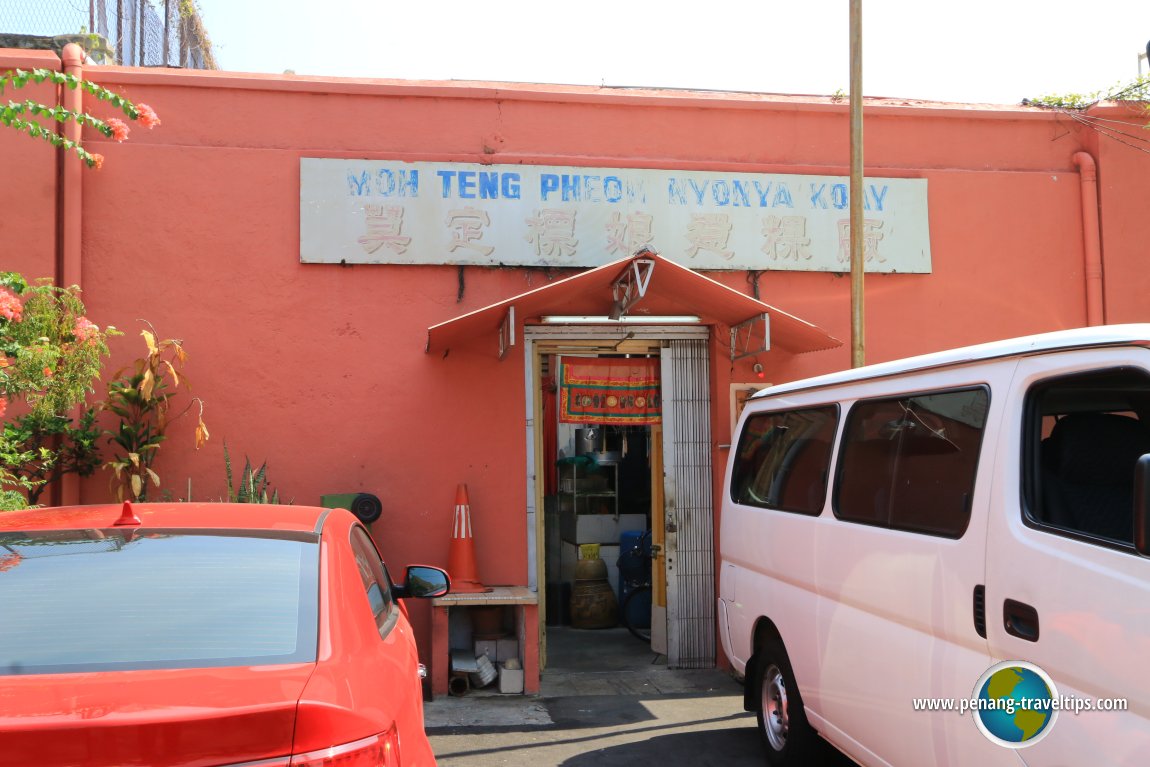 Moh Teng Pheow Nyonya Koay (3 April 2016)
Moh Teng Pheow Nyonya Koay (3 April 2016)
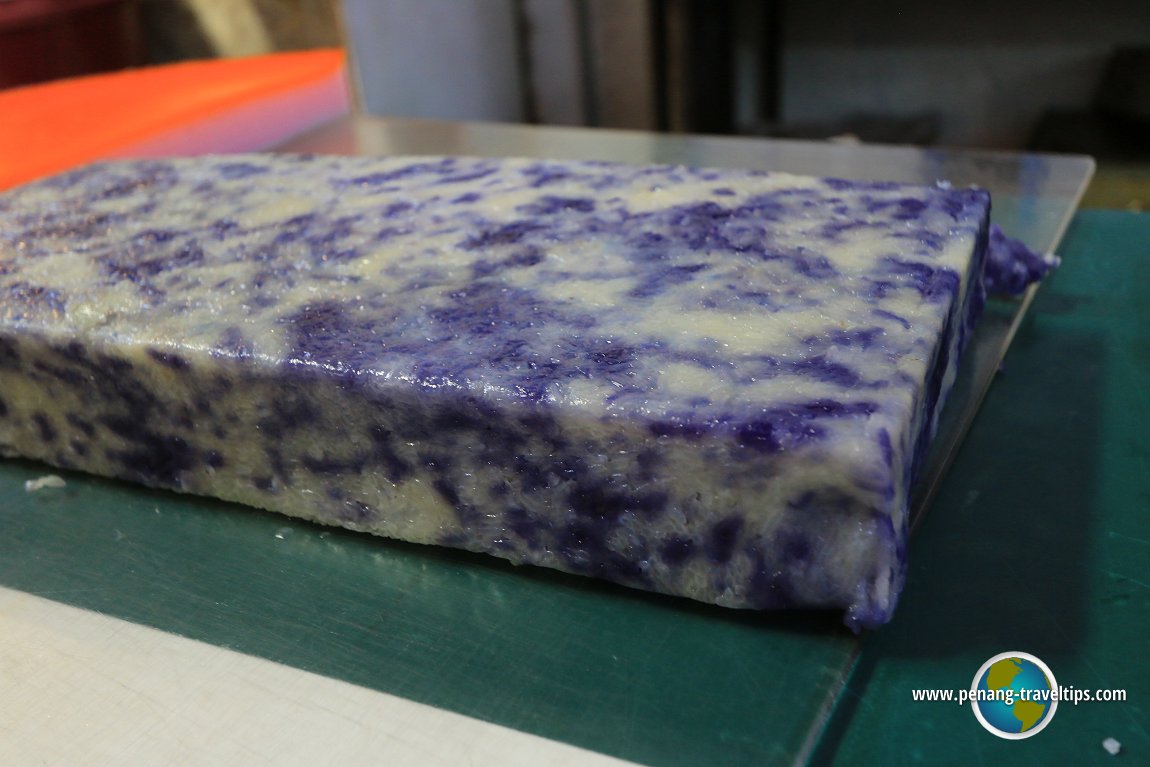 Here's enough pulut tatai to feed the whole kampung. (3 April 2016)
Here's enough pulut tatai to feed the whole kampung. (3 April 2016)
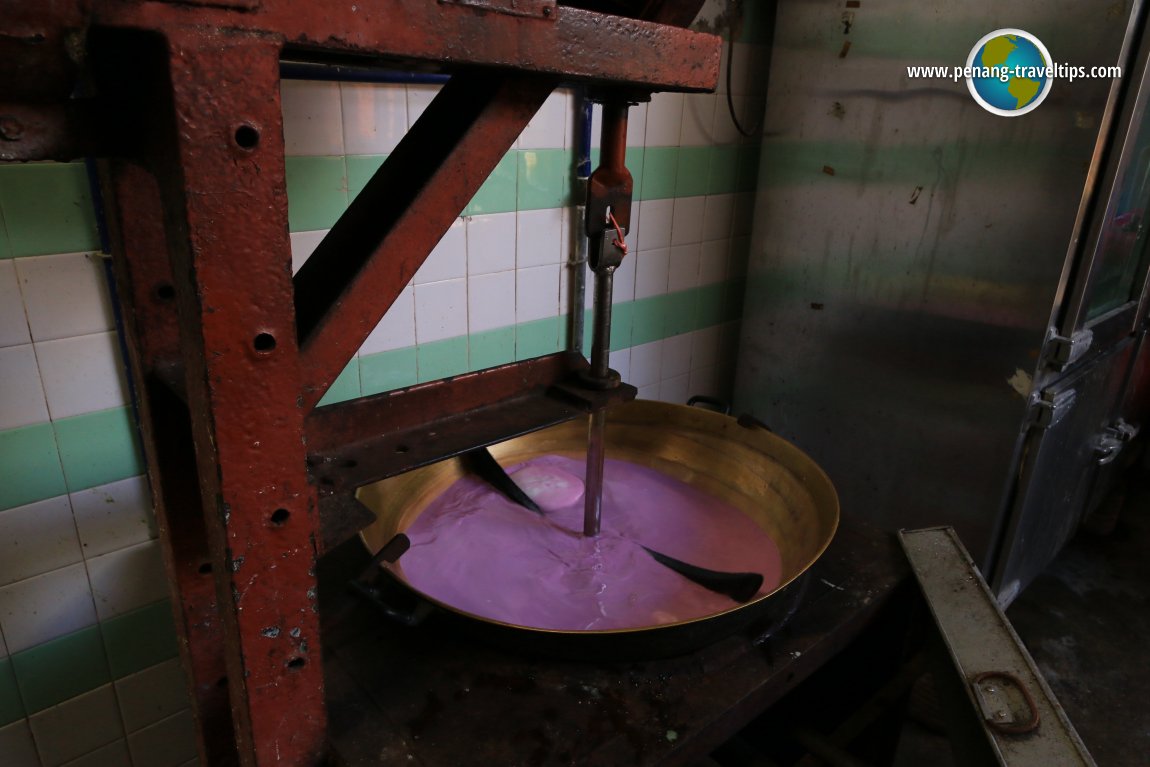 Kuih bengka in the making, factory style. The frozen santan is being gradually diluted in the stirring. (3 April 2016)
Kuih bengka in the making, factory style. The frozen santan is being gradually diluted in the stirring. (3 April 2016)
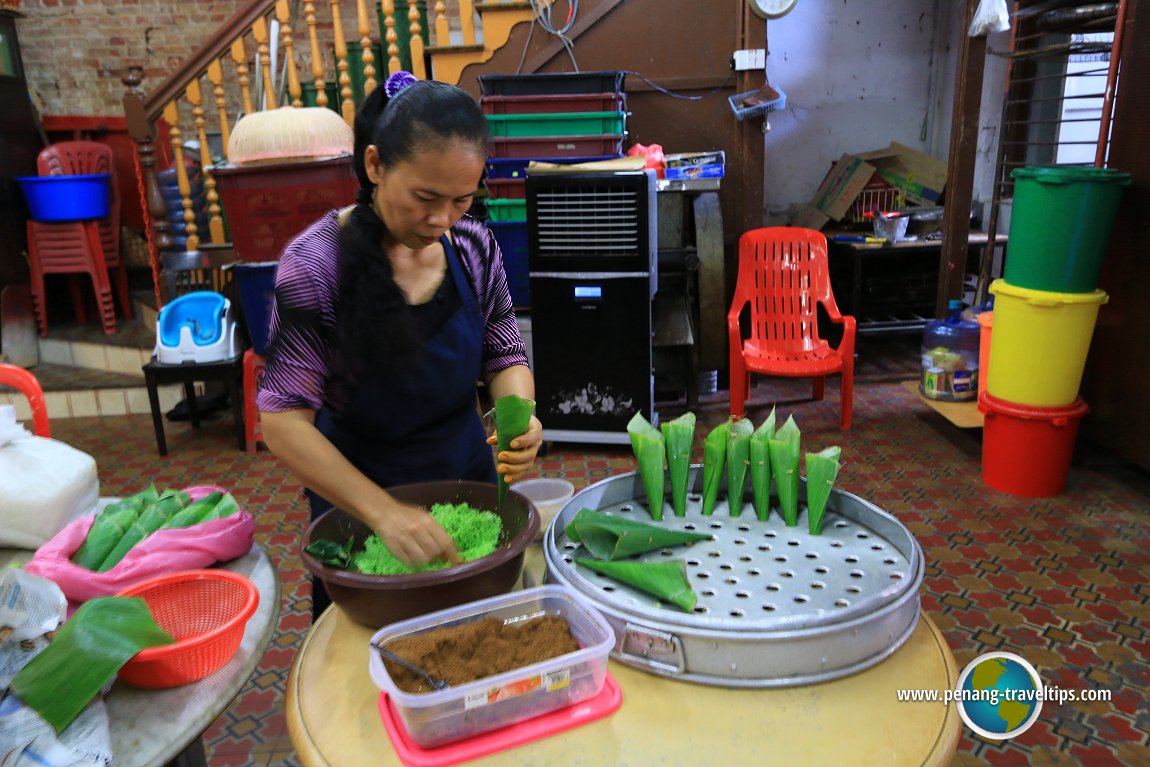 Worker preparing the abok-abok. (3 April 2016)
Worker preparing the abok-abok. (3 April 2016)
Those who follow my own Facebook timeline will see that we often make these kuih at home, but it is a great fascination for us to see kuih being "manufactured" in industrial scale. We walked through the kitchen, admiring the size of the operation. We saw a large slab of chu cu kuih ready to be sliced into small pieces. Each piece will be sold for 50 sen.
Elsewhere, we saw a large wok where kuih bengka is being made. To get the desired colour, edible food colouring is used - purchased from Sim Company on Carnarvon Street, as it is impossible to get the amount of bunga telang required, and also, how do you achieve the desired purple of the kuih bengka otherwise?
I can see that the entire operation is highly labour intensive. Yet, due to difficulty in getting workers, they have to make do with just two workers, with family members all having to join in.
With so few people picking up the art of making Nyonya kuih these days (present company's significant other being one of the few exceptions), Moh Teng Pheow Nyonya Koay is one of the few remaining bastions for this trade. Judging from the good business being conducted at the canteen, I can only deduce that a lot of locals still appreciate Nyonya kuih, except that they aren't able to make it themselves. Thesefore, my hope is that Moh Teng Pheow Nyonya Koay will continue to go strong, and perhaps even open outlets in other parts of Penang.
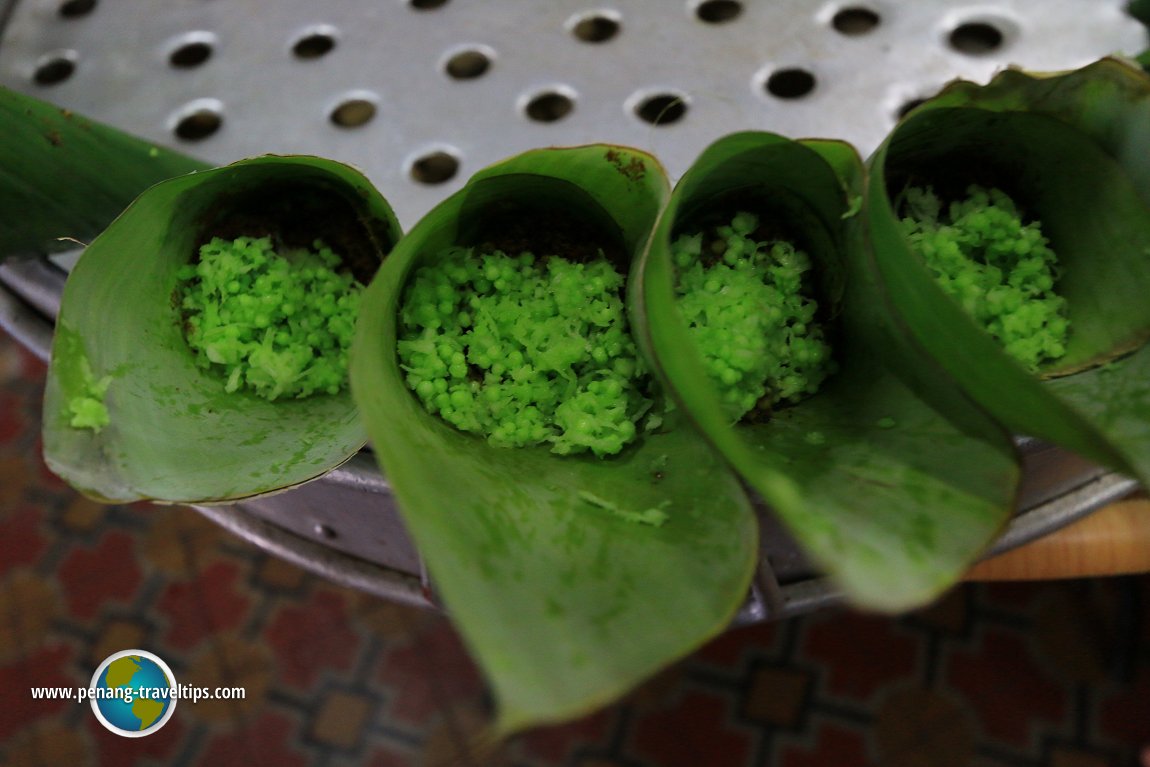 The sagoo peeking out of their banana-leaf cones of the abok-abok. (3 April 2016)
The sagoo peeking out of their banana-leaf cones of the abok-abok. (3 April 2016)
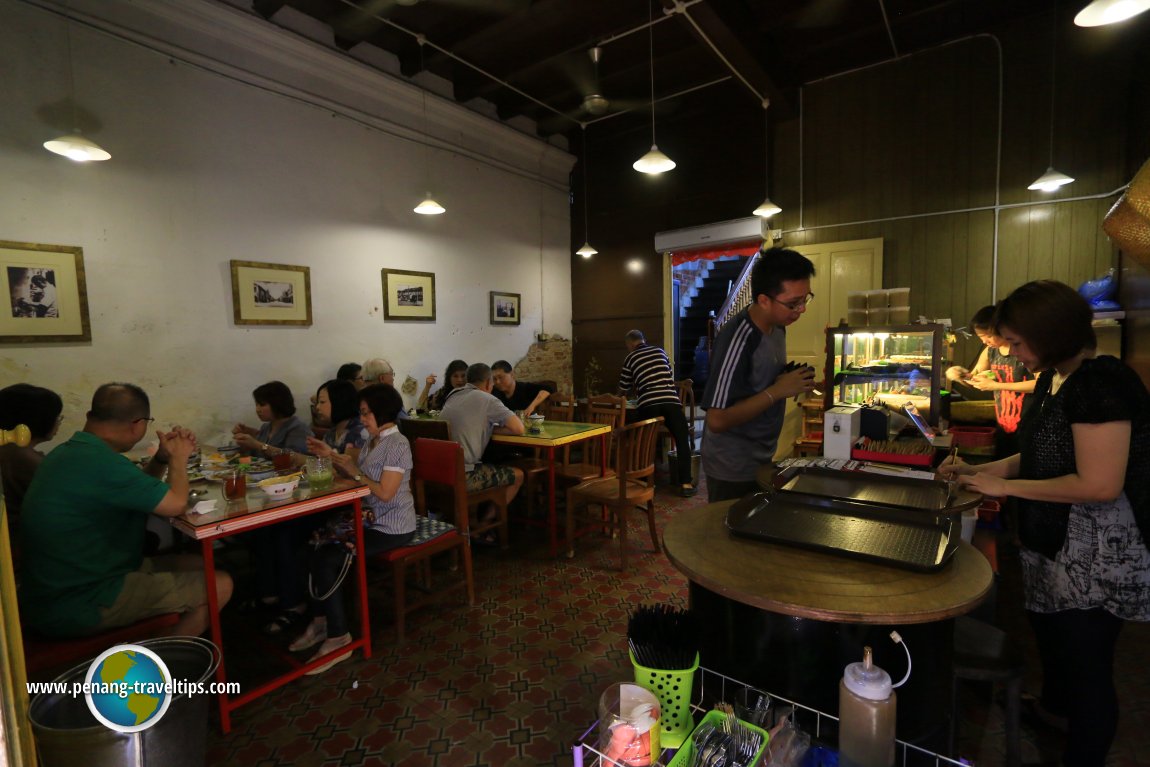 All busy at the Moh Teng Pheow Canteen. (3 April 2016)
All busy at the Moh Teng Pheow Canteen. (3 April 2016)
 My wife with the various kuih at Moh Teng Pheow Nyonya Koay. (3 April 2016)
My wife with the various kuih at Moh Teng Pheow Nyonya Koay. (3 April 2016)
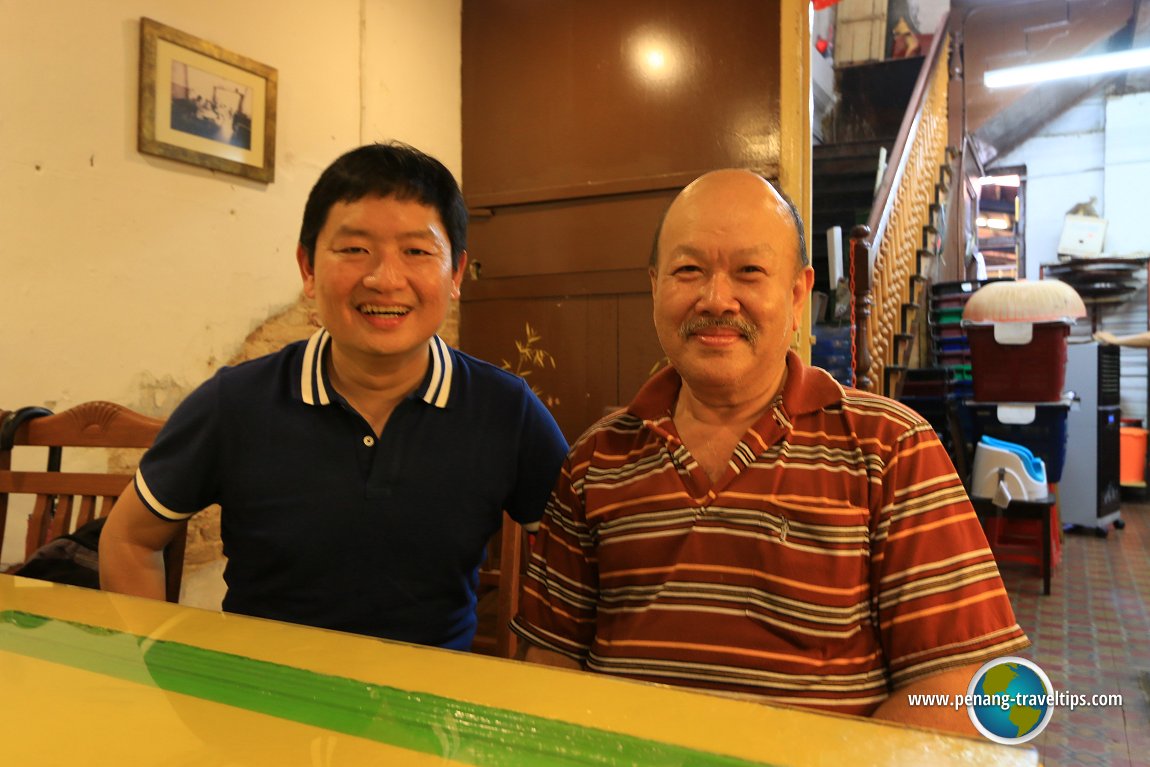 Mook Hian Beng (3 April 2016)
Mook Hian Beng (3 April 2016)

Copyright © 2003-2025 Timothy Tye. All Rights Reserved.

 Go Back
Go Back